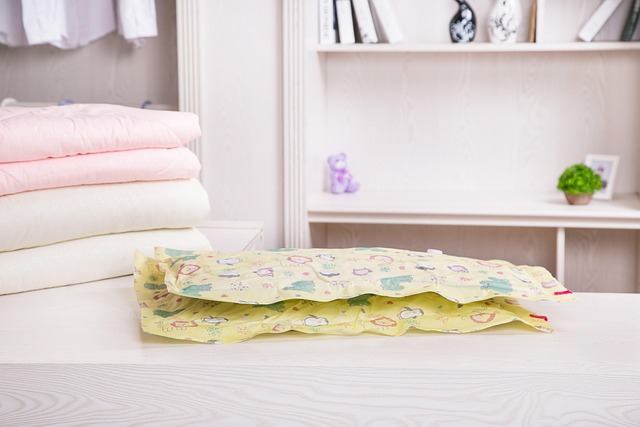Routine Care to Prevent Permanent Fabric Discoloration
Preventing permanent fabric discoloration begins with timely, informed care. Simple habits—like quick prewash for fresh spots, avoiding harsh solvents, and testing enzyme cleaners on an invisible patch—can keep upholstery, carpet, and clothing looking consistent and reduce the need for professional intervention.

Every piece of fabric, from garments to upholstery and carpet, responds differently to spills and cleaning agents. Rapid attention, the right choice of detergent or enzyme cleaner, and understanding when to soak, prewash, or call professionals can prevent a temporary stain from becoming a permanent discoloration. This guide explains practical, routine care steps and safe approaches for a variety of stains and textiles.
How do fabrics respond to stains?
Different fibers—natural fibers like cotton and wool versus synthetics like polyester—absorb and hold stains differently. Natural fibers often wick liquids deeper, which can make oil and grease harder to remove without a prewash or solvent designed for those fabrics. Synthetic fabrics may repel water-based stains but attract oily soils. Always blot fresh spills rather than rubbing, and identify the stain type (oil, ink, protein-based, or dye transfer) before choosing a treatment to protect color integrity and fiber health.
How to treat upholstery stains?
Upholstery typically combines padding and surface fabric that can trap moisture and odor. Start by blotting excess material gently with a clean cloth. For water-based stains, a mild detergent diluted in water applied with a soft cloth and gentle dabbing often works; for protein stains like food or blood, a cold-water prewash or soak is preferable to avoid setting the stain. Test any enzyme cleaner or solvent on a hidden area to confirm colorfastness. Excessive wetting or aggressive scrubbing can distort padding and cause rings or discoloration.
What works for carpet stains?
Carpet fibers and backing make stain care different from flat fabrics. Immediate blotting and a prewash or spot treatment can limit dye migration. For many carpet stains, a mixture of mild detergent and water, applied sparingly, followed by blotting helps. Enzyme-based cleaners are effective on organic spills (food, pet accidents) because they break down proteins that cause both stains and odor. Avoid saturating carpet; use a wet-vac or professional cleaning if padding becomes soaked to prevent mold and permanent discoloration.
When to use enzyme cleaners?
Enzyme cleaners target organic stains—food, blood, sweat, and pet messes—by breaking down proteins and fats that cause visible marks and lingering odor. They are especially useful on fabric, upholstery, and carpet when stains are recent or treated promptly. Allow enough dwell time per product instructions, then blot and rinse if recommended. Enzymes are gentle on many materials but always test a hidden spot first; they are not designed for ink, oil, or dye transfer stains, which usually require solvent or detergent approaches.
Choosing the right detergent and solvent?
Detergent choice matters: gentle, pH-balanced detergents and formulated upholstery or carpet cleaners are safer for colors and fibers. For grease or oil, a prewash with a degreasing laundry detergent or a small amount of dish detergent can lift oils before laundering. Solvents can remove ink and heavy grease but carry higher risk—use only labeled fabric-safe solvents in a well-ventilated area and test first. Avoid mixing solvents with bleach or ammonia, and follow manufacturer care labels on clothing and furniture to reduce the odds of permanent discoloration.
How to remove oil, grease, ink and odor?
For oil and grease, absorb fresh residue with a powder (cornstarch or baking soda), let it sit, then brush away before applying a prewash or detergent. Ink often requires alcohol-based or specialty ink removers; treat promptly and blot, not rub. For persistent odors, enzyme products neutralize organic smells better than fragrances. If a stubborn mark persists after careful at-home methods—prewash, soak in appropriate solution, or spot solvent—consult local services or a professional cleaner experienced with specific fabrics to minimize the risk of color loss or damage.
Routine care also includes regular maintenance: vacuuming upholstery and carpet, rotating cushions, following laundry prewash or soak recommendations, and storing textiles away from direct sunlight to limit fading. Label-aware cleaning, prompt action, and cautious product choices protect fibers and pigments over time.
In summary, preventing permanent fabric discoloration relies on quick assessment, appropriate use of detergents, enzymes or solvents as suited to the stain type, and conservative testing on inconspicuous areas. Combining routine maintenance with correct spot treatments reduces the frequency and severity of discoloration and preserves the look and lifespan of fabrics worldwide.





